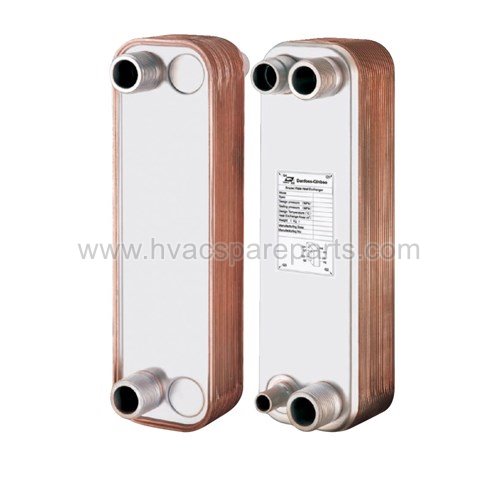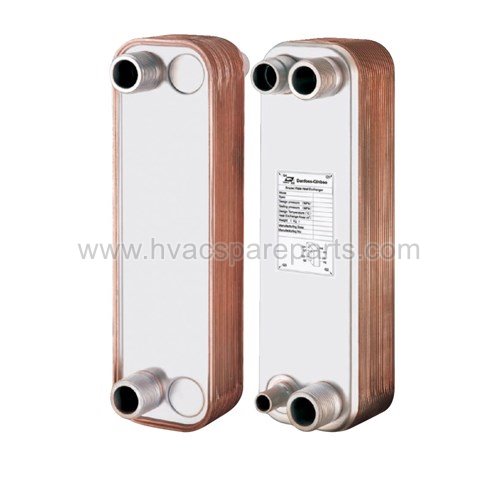From United State & Canada: ☎️ 1 800 798 3409
- Copper Pipes and Copper connections
-
Valves
- Heat Exchangers
- Pressure switches and thermostats
- Water Pumps And Motors
- Sight Glasses
- Sensors and Transmitters
- Contactors and Motor Starters
- Electronic Controls
- Liquid Level Controls
- Filters and Strainers
- Oil separators Liquid receiver
- HVAC Installation Maintenance
- Cold Rooms
- Cold Rooms With Monoblocks Or Splits Units
- Cold Rooms Of 1 To 3 M3 Of Volume Equipped With Refrigeration Equipment
- Cold Rooms From 3 To 6 M3 Of Volume Equipped With Refrigeration Equipment
- Cold Rooms From 6 To 9 M3 Of Volume Equipped With Refrigeration Equipment
- Cold Rooms From 9 To 12 M3 Of Volume Equipped With Refrigeration Equipment
- Cold Rooms From 12 To 15 M3 Of Volume Equipped With Refrigeration Equipment
- Cold Rooms From 15 To 18 M3 Of Volume Equipped With Refrigeration Equipment
- Cold Rooms From 18 To 21 M3 In Volume Equipped With Refrigeration Equipment
- Cold Rooms From 21 To 24 M3 Of Volume Equipped With Refrigeration Equipment
- Cold Rooms From 24 To 27 M3 Of Volume Equipped With Refrigeration Equipment
- Cold Rooms From 27 To 30 M3 Of Volume Equipped With Refrigeration Equipment
- Cold Rooms From 30 To 33 M3 Of Volume Equipped With Refrigeration Equipment
- Cold Rooms From 33 To 36 M3 Of Volume Equipped With Refrigeration Equipment
- Cold Rooms From 36 To 39 M3 Of Volume Equipped With Refrigeration Equipment
- Cold Rooms From 39 To 42 M3 Of Volume Equipped With Refrigeration Equipment
- Cold Rooms From 42 To 45 M3 Of Volume Equipped With Refrigeration Equipment
- Freezer Rooms
- Freezer Rooms With Monoblocks Or Splits Units
- Walk In Freezers From 1 To 5 M3 Of Volume Equipped With Refrigeration Equipment
- Walk In Freezers From 5 To 10 M3 Of Volume Equipped With Refrigeration Equipment
- Walk In Freezers From 10 To 15 M3 Of Volume Equipped With Refrigeration Equipment
- Walk In Freezers From 15 To 20 M3 Of Volume Equipped With Refrigeration Equipment
- Walk In Freezers From 20 To 25 M3 Of Volume Equipped With Refrigeration Equipment
- Walk In Freezers From 25 To 30 M3 Of Volume Equipped With Refrigeration Equipment
- Walk In Freezers From 30 To 35 M3 Of Volume Equipped With Refrigeration Equipment
- Walk In Freezers From 35 To 40 M3 Of Volume Equipped With Refrigeration Equipment
- Walk In Freezers From 40 To 45 M3 Of Volume Equipped With Refrigeration Equipment
- Walk In Freezers From 45 To 50 M3 Of Volume Equipped With Refrigeration Equipment
- Walk In Freezers From 50 To 55 M3 Of Volume Equipped With Refrigeration Equipment
- Walk In Freezers From 55 To 60 M3 Of Volume Equipped With Refrigeration Equipment
- Walk In Freezers From 60 To 65 M3 Of Volume Equipped With Refrigeration Equipment
- Walk In Freezers From 65 To 70 M3 Of Volume Equipped With Refrigeration Equipment
- Starting & Running Capacitor
PLATE HEAT EXCHANGER
The best price to buy Plate Heat Exchangers
FiltersPlate exchangers, also known as plate heat carriers, are a type of heat exchangers used for metal plates in parallel. Plate heat exchangers allow thermal energy to be transported between two materials, being used in heating and cooling technology, even for the preparation of hot water. Likewise, it consists of multiple heat-conducting plates welded and screwed together, which consist of corrugated chambers superimposed in layers. The substances circulate in the spaces between the chambers, with a countercurrent direction, which determines the magnitude of the energy transfer. However, plate heat exchangers are necessary for processes where temperature is an ally. We will explain what a plate heat exchanger is fors, how it works, advantages and disadvantages, how to clean a plate heat exchanger and much more. Keep reading!
What is a plate heat exchanger used for
The plate heat exchangers are perfect for those fluids with low viscosity and free of particles, thus being the outlet and inlet temperatures. It is used for industry, in pharmaceutical, food, steel plants, chemicals, among others. They are also used for water heaters and other fluids, evaporators, subcoolers, steam condensers, heat recovery on temperature shorts, handling of corrosive substances, among other functions that we can give a plate heat exchangers. However, it provides efficient heat transfer in small equipment, where units are more flexible in design and easy to service. The range of plate heat exchanger products we offer is extremely wide.
Operation
The operation of the plate heat exchanger is very simple to understand. Each plate has 4 holes, 2 at the back and 2 at the bottom. The hot liquid enters through any upper hole and leaves through a lower connection, so I understand that the cold enters through a lower hole and leaves through the upper one. The plate heat exchanger exercises this operation, when the fluid passes through the plates, circulates through the distribution area and receives or transfers heat, as it moves. Thanks to the fact that the returning fluid has a lower temperature gradient, it needs less heating time, which means that the exchangers have a fairly efficient function and system with minimal energy expenditure.
Plate heat exchanger
A plate heat exchanger is a piece of equipment that continuously transfers heat from one medium to another. To better understand the function of the plate heat exchanger, we must know the two types that exist:
- Direct heat exchanger: both media are in contact with each other, however, both media do not mix. A cooling tower is a clear example to understand this type of exchangers, in this device the water is cooled through contact with the air.
- Indirect heat exchanger: both media are separated by a wall through which heat is transferred. This type of exchanger is available in plate, tube and shell, spiral, among others, it offers a better solution to thermal problems, with broader pressure and temperature limits.
Boiler plate heat exchanger
The plate heat exchangerboiler is an element responsible for allowing heat exchange inside the boilera. Thus, the products can pass from the final combustion and take advantage of the remaining heat for the condensation of steam. It can be located in different parts of the boiler, but it is usually placed at the top. It fulfills its function when the water enters from the return of the condensation circuit. Where it manages to heat up and circulates to the primary exchanger, until it reaches the plate exchanger. The function of the plate heat exchanger is mainly carried out in winter, where the saving of the boiler condensation must be much greater, and they are much more efficient.
Advantages and disadvantages of a plate heat exchanger
Technology can bring with it advantages and disadvantages in its products that are part of the electrical industry, plate heat exchangers have pros and cons, but we continue without denying their great performance. The advantages of a plate heat exchanger are the following:
- They are easy to maintain and clean, they can be brushed with pressurized water and a brush, or a chemical cleaning due to the high turbulence of the equipment.
- The plates are very easy to change.
- The equipment is quite compact, that is, they take up less space than shells and tubes, and the space needed to clean them is considerable.
The disadvantages are the following:
- The maximum working temperature is limited by its resistance, being 149° C.
- The pressure also has limits, making it possible to achieve a good seal on it. The maximum pressure can be 300 psi, equivalent to 20 atm. Everything will depend on the size of the plates, frame model and number of plates that the equipment has.
- Not good for generating large amounts of steam, nor for vaporizing fluids.
How to clean boiler plate heat exchanger
There are two ways to clean the boiler plate exchanger, take note and read carefully, they are the following:
- Clean the exchanger without disassembling: the pump must be disconnected from the boiler, just as if you were going to perform a thorough rinse. It is then used to clean an anti-lime chemical, to break up or dissolve alkaline stones that solidify when the temperature rises.
- Clean the exchanger by disassembling: you can disassemble the exchanger and apply the anti-limescale product with circular movements using inlets and outlets. If you find it difficult to disconnect, you should do it through the threaded ones.
Prices
The prices of plate heat exchangers are quite accessible and ideal for each client and their needs. Request the price of the exchanger of your choice, we have personalized advice dedicated to you. Checking the price of plate heat exchangers online has never been so easy.
Aacore Supply NCAGE
Privacy Policy
Terms of Use
Shipping Policy
Returns and refunds
HVAC price catalog
Copyright © 2020 hvacspareparts.com
TRADEXUS MARKET, LLC
7345 W Sand Lake Rd,
STE 210 office 5361
Orlando, FL 32819 US
AACORE SUPPLY
C/ de Viver, 25, bajo Local, 46020
Valencia, España
МаркетВекс
Ул. Марагидик 19, етаж 2, офис 1
8000 Бургас, България
La Central du Froid SARL
Nº 12, Av Moulay Abdelhafid
90090 Tanger, Maroc
Opening Hours.
Our shops: Monday to Friday: 07.00 am - 01.00 pm (EST)
Online: 7 days a week, 365 days a year
Menu
Important Notice
Until 04/25/2025, our customer service will be available only via email due to an update in our systems. This update is part of our ongoing efforts to improve the quality and efficiency of our service.
We appreciate your understanding and patience during this period. We will be happy to assist you via email at support@hvacspareparts.com
If you are not yet a registered user, do so now, and start enjoying without waiting the excellent prices that we can offer you.
- Heat Exchangers























